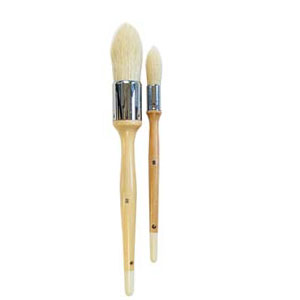
 Revision Date: 14 April 2021
Revision Date: 14 April 2021 A layer's blend mode specifies how it is blended with the layers immediately below it in the layer stack. Changing the
To change a layer's
Make illustrations, manga, comics and animation with Clip Studio Paint, the artist’s tool for drawing and painting. All you need for drawing and creating digital art! Dry brushing is a powerful blending technique. For more details about. Artist Flat Paint Brush-Large Wash Brushes Set for Gesso, Varnishes, Acrylic Painting, Watercolor, Wood, Wall, Furniture-Brush Cleaner 6 Pcs 4.5 out of 5 stars 332 $19.99 $ 19. This older set of 14 MS5 brushes can work nicely in the newer versions of Clip Studio Paint too. All of the brushes follow a kind of theme with simple cloud blending brushes, patchy charcoal-style brushes, and glitchy pixel-y brushes. Some designs even borrow inspiration from Minecraft which is an interesting take. Winsor & Newton Artisan Brushes For Artisan Water-Mixable Oil Color Winsor & Newton developed the Artisan range of brushes to achieve the best possible results when painting with Artisan Water Mixable Oil Colour. The brushes are made using a unique blend of high quality synthetic fibres which are designed specifically to have.
In the dialog the

The order of the layers in the layers stack is important when using layer blend modes. Layer A blended over Layer B is not the same as Layer B blended over Layer A - even if the same blend mode is used.
Not all blend modes are easy to understand in classic or intuitive terms, and because of this experimentation is recommended. The paint.net forum is a great place for asking questions, getting tips and discovering how to use the less intuitive features of paint.net.
The
Select the blend from the list and use the tool as normal to have the blend mode applied as the tool covers the canvas. The tool and blend mode will be applied to the active layer as if the tool was being used on a new layer immediately above the active layer and the results merged down following the editing operation.
For the following discussion, these two images will be used to demonstrate the layer blend modes:
Where the term composition is used, this refers to the sum of all the visible lower layers in the image. The final composition is how the image appears on screen or what results when the entire image is flattened.
Blend Modes
Normal
This is the default and standard blend mode. Each pixel in the layer is blended with the composition depending on its alpha value.
Multiply
Abbyy finereader for mac free download. Each pixel's RGB component intensity is multiplied with the pixel value from the composition. The result of this blend mode is always darker than the original. White pixels in the blend layer are effectively rendered transparent by the
Additive
Each pixel's RGB component intensity is added to the intensity of the pixel values from the composition. The
Color Burn
This blend mode has the effect of making dark pixels darker while lighter pixels must be blended with other light colored pixels in order to remain bright.
Color Dodge
This can be thought of as the opposite of

Reflect
This blend mode can be used for adding shiny objects or areas of light. Black pixels in the blend layer are ignored as if they were transparent. Navfit98a download for mac.
Glow
This is the reverse of the
Overlay
This is a combination of
Difference
The counterpart to
Negation
At first glance this seems similar to
Lighten

The lightest pixel of either the blend layer or the composition is used.
Darken
The darkest pixel of either the blend layer or the composition is used.
Screen
This can be thought of as the opposite of the
Xor
This is short for 'exclusive OR', which is an advanced blending mode that is primarily used for image analysis. Pixels in the blend layer which exactly match the composition will be rendered black. Where differences exist, colors are shown.
Overwrite
This type of blending applies what is known as 'COPY' blending. In this mode, any new pixel being drawn completely replaces any pixel that was already at that location in the active layer. The differences can be seen below where a thick line has been drawn twice, each time with an Alpha value of 128 (approximately 50% transparent).
Blending Paint Brushes
The line on the left was drawn with
The line on the right was drawn using
Color Blending Paint Brush
Overwrite
Round Blending Paint Brush
The Overwrite blending option can be especially useful with the
